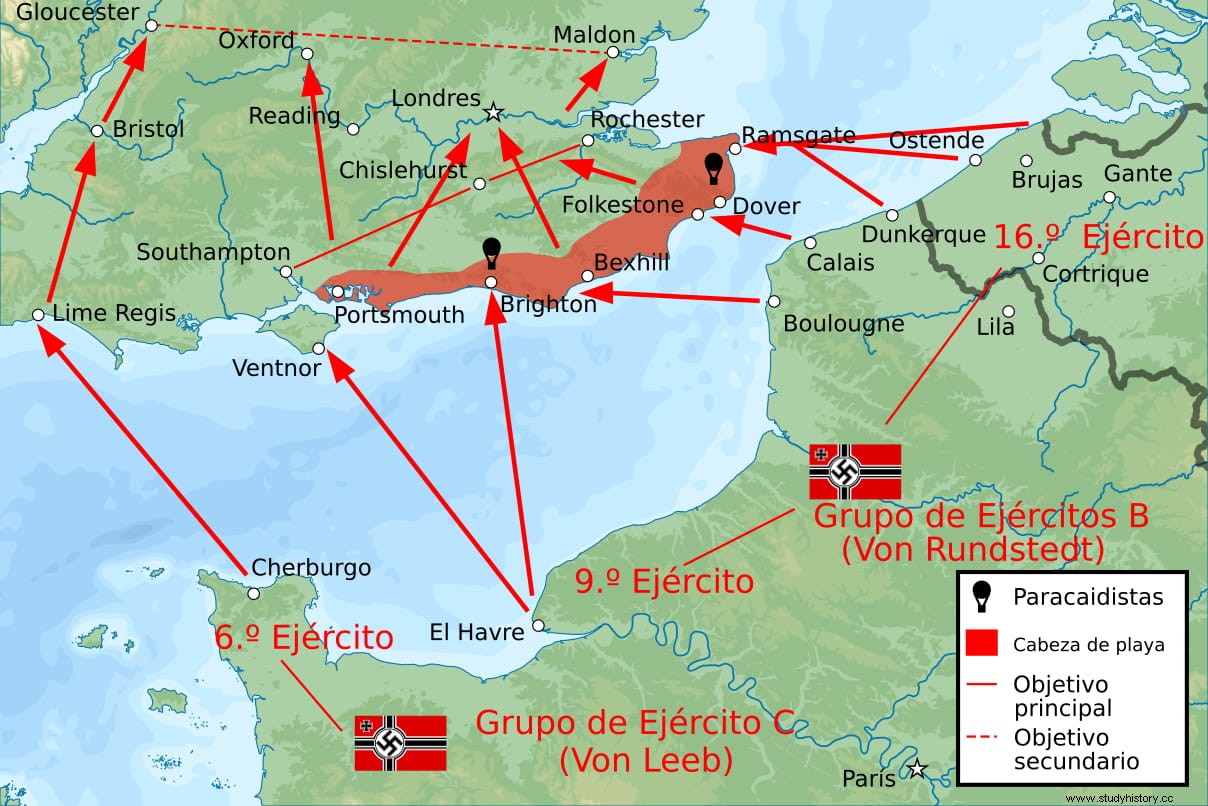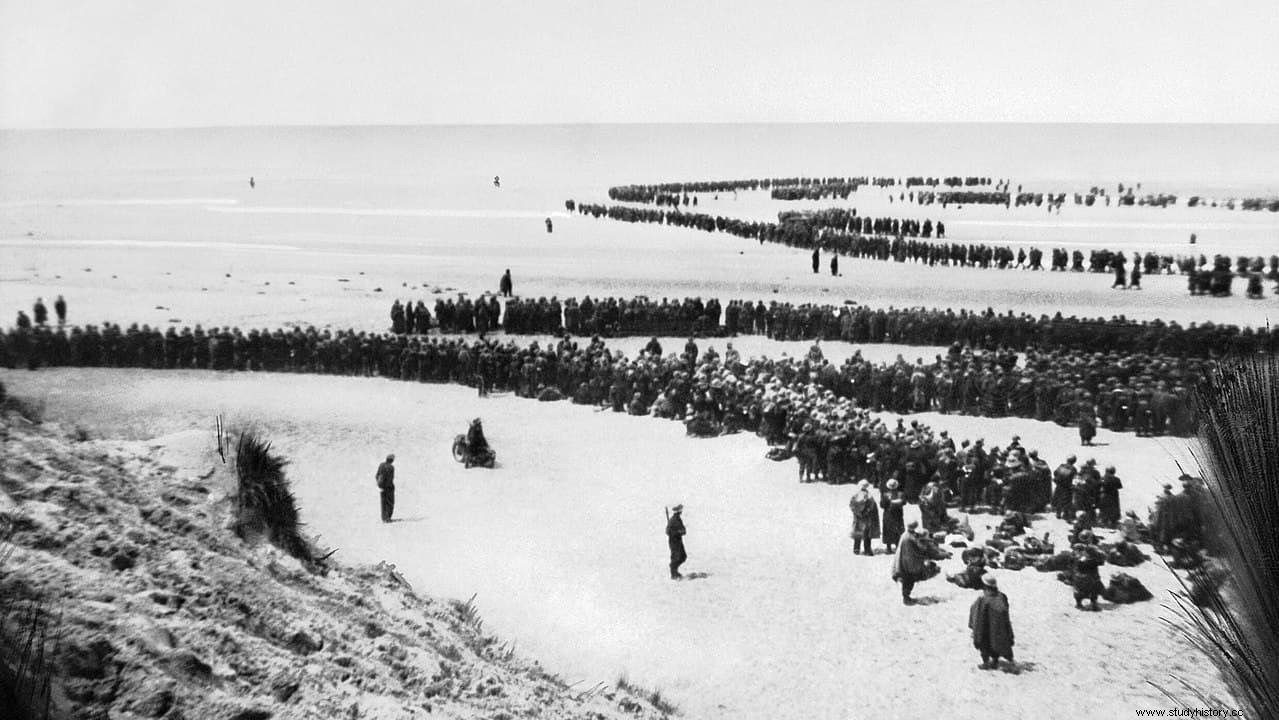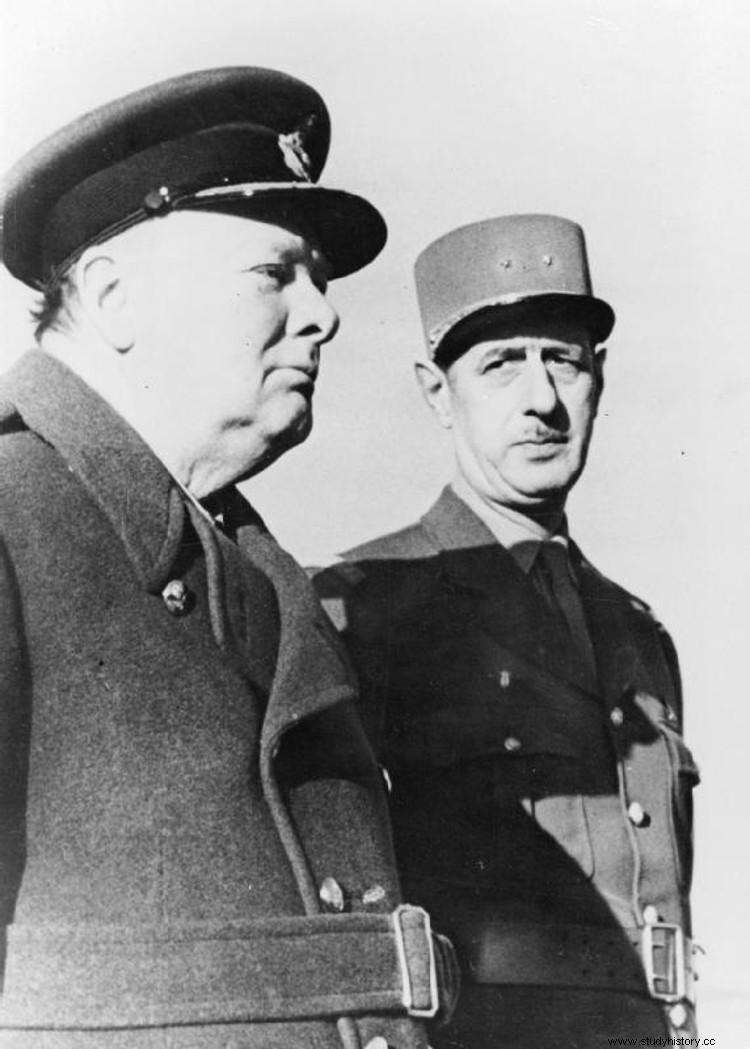Sonderfahndungsliste GB It is one of those Germanic names that are impossible to pronounce for ordinary mortals. Its literal translation is Great Britain Special Search List , although it may sound more sinister in the later popular version, Black Book.
Even worse if you take into account what it represented when it was coined by the Nazis in 1940, during World War II:it referred to a list of the relevant personalities who lived in British territory at that time and who should be arrested when it was consummated. Operation Sea Lion.
This one, Unternehmen Seelöwe in the original version, it was the name with which the Kriegsmarine German baptized the plan to invade Great Britain (to be completed with Operation Green, the occupation of Ireland). It was conceived in the autumn of 1939, presented to Hitler in the spring of the following year, when it became clear that London was not going to negotiate, but after several postponements it ended up being discarded in 1942, given that Operation Barbarossa began instead, the invasion of the USSR. Now, if it had been applied successfully -and there was a time when it was quite feasible- how would it have affected the population?

Well, apart from other considerations, what interests us here is the issue of the implementation of this planned wave of arrests. It had a precedent in the Sonderfahndungsbuch Polen (Special Prosecution Book-Poland), drawn up by German agents and fifth-columnist Teutonic residents of the homonymous country, who wrote down sixty-one thousand names destined to join the list of victims of what was known as Operation Tannenberg, that is, the extermination of Poles as a prologue to a German recolonization of Eastern Europe. In the Sonderfahndungsbuch Pollen included politicians, soldiers, artists, writers... It meant the death of tens of thousands of people.
When France fell, all eyes turned to the English Channel. The government in London was aware that at the time it had few guarantees of defense against an attempted conquest by the enemy, with its army half-tied following the evacuation of the British Expeditionary Force from Dunkirk; the Royal Navy retained its superiority at sea but the Germans, massively supported by the Luftwaffe , managed to reach land there would be no way to stop them.

Teutonic spies provided maps, photographs, and topographical information on the islands, as well as a wealth of data that would be of use to the troops as they made their way through England. All of that was compiled into a manual, prepared by the oberführer of the SS Walter Schellenberg at the end of June 1940 for the RSHA (Reich Main Security Office) which was still headed by Reinhard Heydrich. With the title Informationsheft Grossbritannien (summarized in Informationsheft GB ), questions about the British political, administrative and economic system were explained, including a list of the main public figures.
This document included additional information on almost everything:police, Church, museums, universities, clubs, Masonic lodges, newspapers, radio stations and other relevant institutions such as the secret services or the military sector; even the Boy Scouts. Anyone who, in short, was likely to present the slightest resistance. It was intended for members of the Einsatzgruppen (SS death squads) and the Gestapo that should accompany the invading force to guarantee security and control over the population, in addition to outlining which places offered opportunities for plunder (hence the inclusion of museums, temples and galleries of art).
The Informationsheft GB had a 104-page appendix, the Sonderfahndungsliste GB , which was what is commonly called a blacklist:2,820 proper names of citizens and refugees, arranged alphabetically and some even with photographs, who should be arrested immediately. It was specified whether by Amt VI (Gestapo) or by Amt VI (Ausland-SD, Foreign Military Intelligence); for example, Churchill would be in the hands of the latter, although the majority would be handled by the former. Of course, the Jews were included in that persecution.

Who was listed in the Black Book? Obviously, apart from Churchill, among the best known there were military men and politicians, such as Robert Baden-Powell (military man, founder of the aforementioned Boy Scouts), Clement Atlee (labor leader who would succeed Churchill in the executive), Neville Chamberlain (the prime minister whom Hitler bullied before the war), Charles de Gaulle (French general exiled in Great Britain since the occupation of his country) or Anthony Eden (Secretary of State for War).
There were also intellectuals, writers, scientists and artists such as Edward Morgan Forster (writer, author of A Passage to India , A room with a view and Return to Howard's End ), Sigmund Freud (neurologist, father of psychoanalysis... and Jew), Aldous Huxley (writer and philosopher, author of Brave New World ), Alexander Korda (producer and director of films such as The Four Feathers , The Thief of Baghdad or The private life of Henry VIII ), Bertrand Rusell (philosopher, pacifist and active anti-fascist), H.G. Wells (writer, author of The War of the Worlds , The time machine and The Invisible Man , in addition to being a recognized socialist), Stefan Zweig (Jewish writer who had been persecuted by Austrian Nazism) or Virginia Woolf (writer, essayist and feminist; her husband Leonard also appeared), among others.
It is curious to see that, despite such thoroughness, striking errors were made, such as including people who had already died (the case of the writer Lytton Strachey) or who no longer resided there (such as the singer and civil rights lawyer Paul Robeson, who on top of that he was black and a communist); likewise, they vociferously forgot about some obvious candidates like George Bernard Shaw, despite the fact that he was known in Germany, or former Prime Minister David Lloyd George (although they did put his daughter Megan, a Liberal MP).>
In practice, luckily, everything remained on paper since the same day that Hitler appointed the SS-Brigadeführer Franz Six, in order to coordinate the repression from the London capital itself, postponed Operation Sea Lion indefinitely. The Black Book was found in the RSHA headquarters in Berlin in September 1945, a few days after the end of the war. It was a 376-page volume with a greenish-tinted cover where the expression Geheim! was highlighted in red. (Secret!). The initial printing of 20,000 copies, kept in a warehouse, ended up devoured by the flames after a bombing, so that only two copies are preserved, one in the Imperial War Museum and the other in the Hoover Institution Library and Archives.
If only no one had wanted to appear on the Sonderfahndungsliste GB After the conflict and the Nazi threat, having the name on the list conferred a certain prestige. Some even rejoiced, such as the multimillionaire Nancy Astor or Lord Vannsitar (who was also director of the secret services), because by the mere fact of belonging to the very conservative upper class they had been considered by their own compatriots to be suspected of being Germanophiles and anti-Semites.
Although, without a doubt, the most brilliant reaction, purely British, was that of the suffragist Rebecca West:when the press published the names of those identified, she sent a telegram to her friend, the playwright Noël Coward, saying «My dear— the people we should have been seen dead with» (Dear, the people we should have died with).
Fonts
Hitler’s Back Book – List of Persons Wanted (Forces War Record)/The rise and fall of the Third Reich (William L. Shirer)/Operation Sea Lion (Leo McKinstry)/The Black Book. What if Germany had won World War II – A chilling glimpse into the Nazi plans for Great Britain (Mei Trow)/Wikipedia
